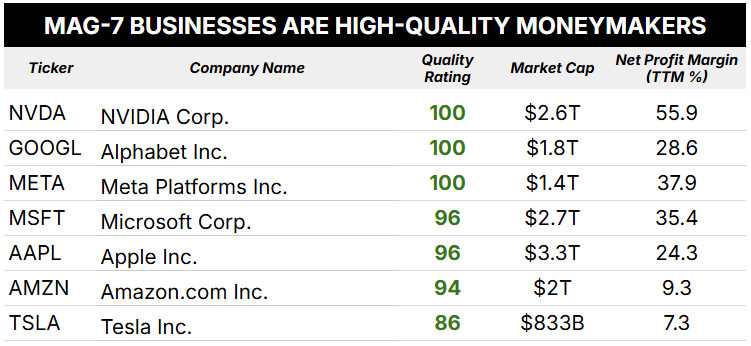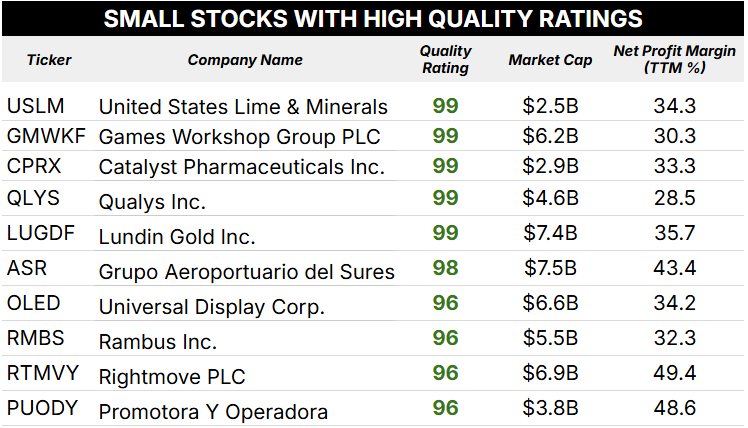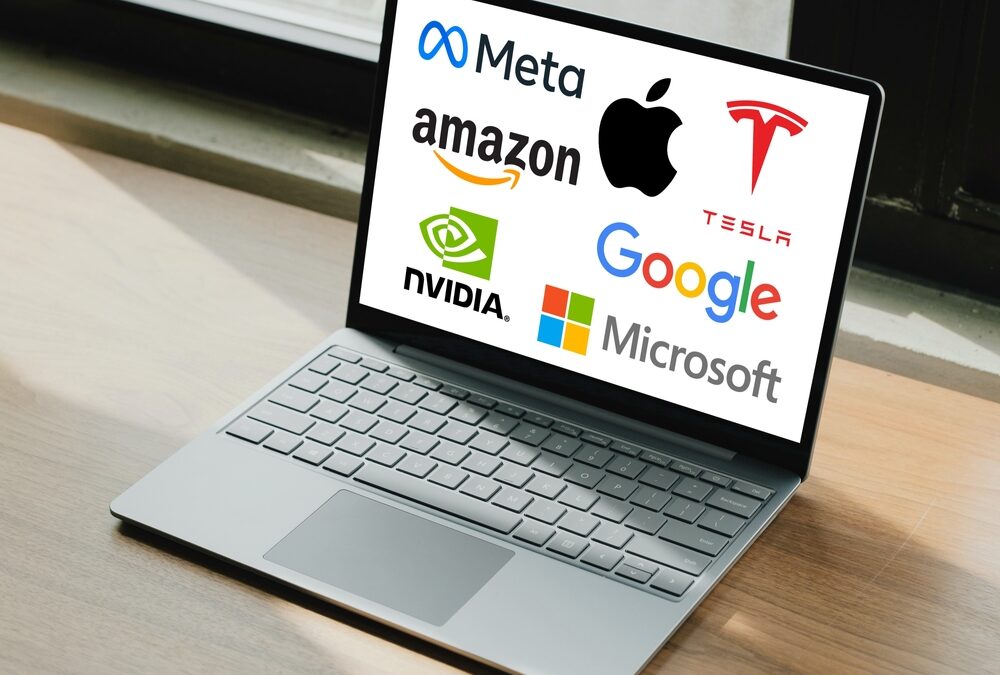Adam O’Dell here with another edition of your newly revamped daily newsletter, What My System Says Today!
We kicked off the week with a look at last week’s best- and worst-performing sectors before drilling down into those sectors’ fastest-moving stocks.
Then yesterday, we put the technology sector in the spotlight as I showed how S&P 500 stocks in this sector have shaped up according to the Momentum, Value, Quality and Growth factors of my Green Zone Power Ratings system.
Here’s the conclusion I highlighted about “Big Tech” in general and the so-called “Magnificent Seven” stocks, specifically:
These are quality businesses, yes … but the valuations of these businesses have gotten out of hand — their stocks are “expensive!”
As a whole, I expect the broader technology sector will face headwinds until investors begin to feel there are at least “fairly” valued stocks, if not “bargains,” to be had.
That conclusion became obvious to us as we noted that 91% of the S&P 500’s technology sectors stocks rate “Bullish” on my system’s Quality factor … yet only 9% rate as favorably on its Value factor.
The natural question to lead from this analysis becomes:
Do I just have to “pay up” for the quality businesses we see in Big Tech and the Mag 7? Or are there other high-quality businesses elsewhere, perhaps with smaller market caps and more attractive valuations?
Glad you asked!
That’s the question we’re tackling today…
The Big Tech Moneymaking Machine You Hear About Daily
Mainstream financial media has harped on two aspects of “Big Tech” and the “Magnificent 7” in recent years…
First, how this select group of stocks has been the primary driver of the bull market that began in the second half of 2022.
For instance, in 2024, the S&P 500 gained 25% … and just seven stocks, the “Mag 7,” accounted for a massive 54% of the index’s returns.
Secondly, the mainstream media has focused on the quality of the Mag 7 businesses … a well-founded point, as you’ll see below.
Taken together, though, the financial media has led you to believe that the Mag 7 is “the only game in town” and that buying their stocks (at any price) is justified by the quality of their business operations.
We’ll test that theory today…
But first, let me explain how the Quality factor of my Green Zone Power Ratings system assesses the quality of a business across multiple dimensions…
The Quality factor considers a company’s profitability using various metrics, including return on assets, equity and invested capital. We measure these numbers over both short- and long-term time frames.
Quality also factors in a company’s profit margins, including the gross profit margin, net profit margin and free cash flow margin.
Finally, in terms of profitability, my model considers earnings, operating cash flow and free cash flow on a per-share basis … as well as the consistency of earnings over prior quarters.
Beyond profitability, my quality rating also includes information about a company’s debt load and its ability to service that debt. It also looks at a metric called asset turnover, which measures the efficiency of a company’s operations.
All told, the quality factor is built on 27 individual metrics.
But my Green Zone Ratings system boils all of that data down into one simple number from 0 to 100.
It’s an effective way to help us distinguish high-quality companies worth considering from the “junk” that we should leave alone at any price.
As you can see in the table below, each of the Mag 7 stocks currently earns a very favorable Quality rating…

As you can see, the Mag 7’s quality rating ranges from 86 (TSLA) to a perfect 100 for NVDA, GOOGL and META.
I’m also highlighting each company’s net profit margin over the trailing twelve months.
The net profit margin is simply the company’s net profits as a percentage of its total revenue. It’s not the only metric my Green Zone Power Ratings system uses to assess a company’s quality, but it’s a commonly cited metric and a good rough gauge of a company’s profitability.
As you can see, Amazon and Tesla are on the lower end, with net profit margins below the S&P 500’s average of 12%. However, the remaining Mag 7 stocks have much fatter margins … between 2X and nearly 5X the average company in the S&P 500!
As a group, the Mag 7’s average profit margin of 28% is more than double that of the S&P 500.
In short, this is why the financial media has become so hopped up on this small group of stocks … they are, indeed, big moneymakers.
But again, you’re paying a massive premium to own these high-quality stocks. In Tuesday’s edition of What My System Says Today, I showed you that these Big Tech stocks are some of the most expensive stocks around based on the Value factor.
So, are these stocks really “the only game in town” for investors who are strict about owning quality businesses?
Let’s have a look outside the Mag 7…
“Quality” Is Not Exclusive to the Mag 7
In addition to rating well on our Quality factor, the other thing these Mag 7 companies have in common is that they are HUGE. Six out of seven of the stocks have market caps in the trillions.
It reasons that a $2 billion company can grow 10X in size much easier than a $2 trillion company can … presuming the company has quality operations on par with those big boys.
So I went fishing in the mid-cap space ($2 billion to $10 billion) for stocks that rank 80 or higher on my system’s Quality factor … and that have a net profit margin at least as high as the average of the Magnificent 7, at 28%.
Here’s what I found…

My screen revealed a total of 32 stocks meeting the criteria above, and this table shows the 10 stocks with the highest Quality ratings.
They all rate 96 or above on the factor, with net profit margins above 28%.
It’s also important to note that these 10 stocks come from various sectors, ranging from industrials and materials to pharma and, yes, technology. The point is … quality is not limited to the technology sector or to the largest stocks in that space.
Pro Tip: I recently shared with my Green Zone Fortunes subscribers one stock that met the stringent criteria of the screen above … meaning it’s a quality mid-cap stock with profit margins just as “fat” as the Mag 7’s. It’s also trading at a far better valuation, even after its stock climbed 78% since I recommended it!
To find out more about that stock and our Green Zone Fortunes community, click here.
And remember … the next time you read a piece in the mainstream media suggesting that Mag 7’s quality businesses are the “only game in town” … you know better!
Until next time…
To good profits,

Adam O’Dell
Editor, What My System Says Today




